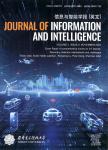Mapping prediction with recurrent neural networks for future LISP enabled networks
作者机构:School of Cyber EngineeringXidian UniversityXi'an 710071China
出 版 物:《Journal of Information and Intelligence》 (信息与智能学报(英文))
年 卷 期:2023年第1卷第2期
页 面:134-147页
学科分类:12[管理学] 1201[管理学-管理科学与工程(可授管理学、工学学位)] 081104[工学-模式识别与智能系统] 08[工学] 0835[工学-软件工程] 0811[工学-控制科学与工程] 0812[工学-计算机科学与技术(可授工学、理学学位)]
基 金:supported in part by the National Key Research and Development Program of China(2021YFB3101304) in part by the Natural Science Basic Research Program of Shaanxi(2022JQ-621,2022JQ-658,2021JQ-207) in part by the National Natural Science Foundation of China(62002278) in part by the Fundamental Research Funds for the Central Universities of Ministry of Education of China(XJS211507,XJS211508) in part by the Fundamental Research Funds for the Central Universities(ZYTS23165)
主 题:LISP Future internet architecture Mapping prediction Recurrent neural network
摘 要:Locator/identifier separation paradigm(LISP)is an emerging Internet architecture evolution trend that decouples the identifier and location of an entity attached to the *** to its flexibility,LISP has seen its application in various fields such as mobile edge computing,and V2X ***,LISP relies on a DNS-like mapping system to associate identifiers and locations before connection *** a procedure incurs an extra latency overhead and thus hinders the adoption of LISP in delay-sensitive use *** this paper,we propose a novel RNN-based mapping prediction scheme to boost the performance of the LISP mapping resolution,by modeling the mapping procedure as a time series prediction *** key idea is to predict the mapping data regarding services to be utilized by users in edge networks administered by xTRs and proactively cache the mapping information within xTRs in *** compare our approach with several baseline methods,and the experiment results show a 30.02%performance gain in LISP cache hit ratio and 55.6%delay reduction compared with the case without mapping prediction *** work preliminarily proves the potential of the approach in promoting lowlatency LISP-based use cases.



